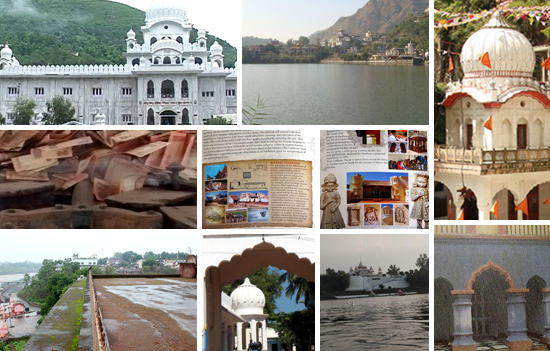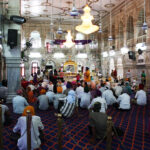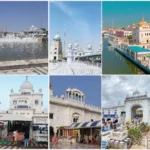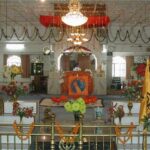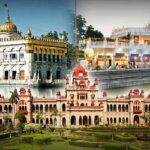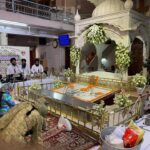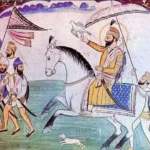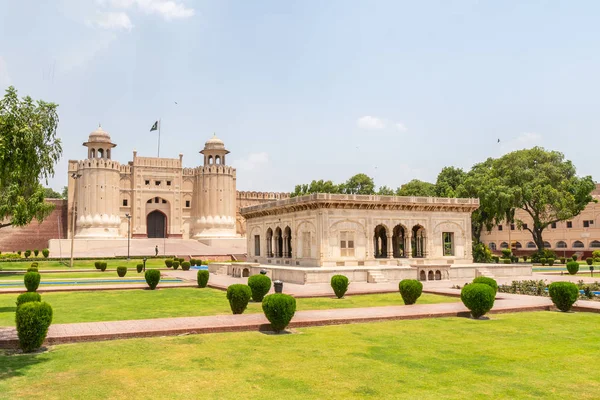Manikaran Sahib Gurudwara
Manikaran Sahib Gurudwara is an important place for Sikhs, and its history is linked to two Sikh Gurus – Guru Nanak Dev Ji and Guru Har Gobind Sahib Ji. A long time ago, Guru Nanak Dev Ji, who started Sikhism, visited Manikaran. There was a time when Guru Nanak and his friend, Bhai Mardana, were hungry. Guru Nanak did something amazing – he asked Bhai Mardana to lift a stone, and hot water started coming out. Then Guru Nanak told Bhai Mardana to ask the hot water for food, and magically, different types of food appeared. This miracle showed Guru Nanak’s special connection with the divine.
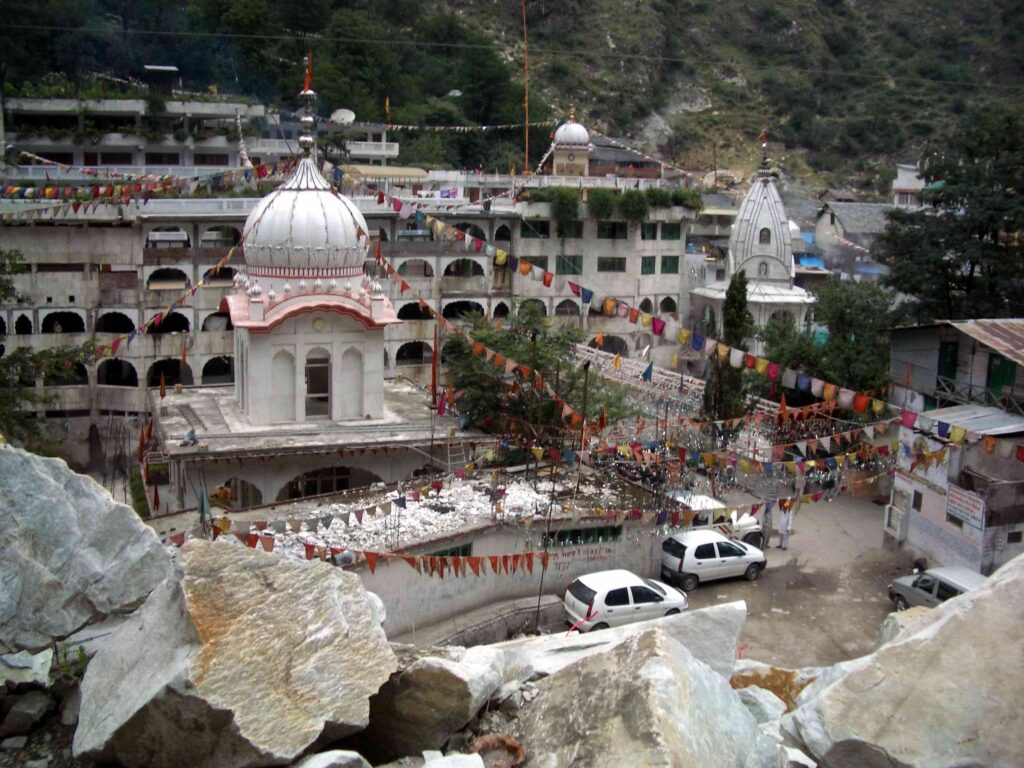
Later on, Guru Har Gobind Sahib Ji, the sixth Guru, also visited Manikaran. During his visit, he did another incredible thing. There was a big rock, and he made it float on water. Then he used it as a platform to cook food. This miracle added to the significance of Manikaran. As time passed, people built a Gurudwara at Manikaran to remember the visits of these Gurus. A Gurudwara is like a Sikh temple. In Manikaran Sahib Gurudwara, there is a main prayer area, a community kitchen where they serve free meals, and a special pool of water considered holy by Sikhs.
People, especially Sikhs, visit Manikaran Sahib Gurudwara for its religious importance. The hot springs there are thought to have healing powers, and many take a dip in the water for its spiritual significance. The Gurudwara also follows the Sikh tradition of serving free meals to everyone, showing kindness and equality.
Gurudwara Paonta Sahib
About 120 km away from Ambala city and secure in the shadow of the Himalayas stands holy shrine of Paonta Sahib,dedicated to Guru Gobind Singh. The magic of the lower Himalayas works on the mind of the pilgrims who come here to pay respects to the great Guru. It can be reached from two sides, from Ambala via Nahan and straight from Yamunanagar. It is a picturesque site on the bank of the river Yamuna. One can reach Paonta Sahib from Dehradun too. Its outskirts are dotted with gardens, green meadows and tall evergreen trees, that echo the gushing waters of Yamuna.
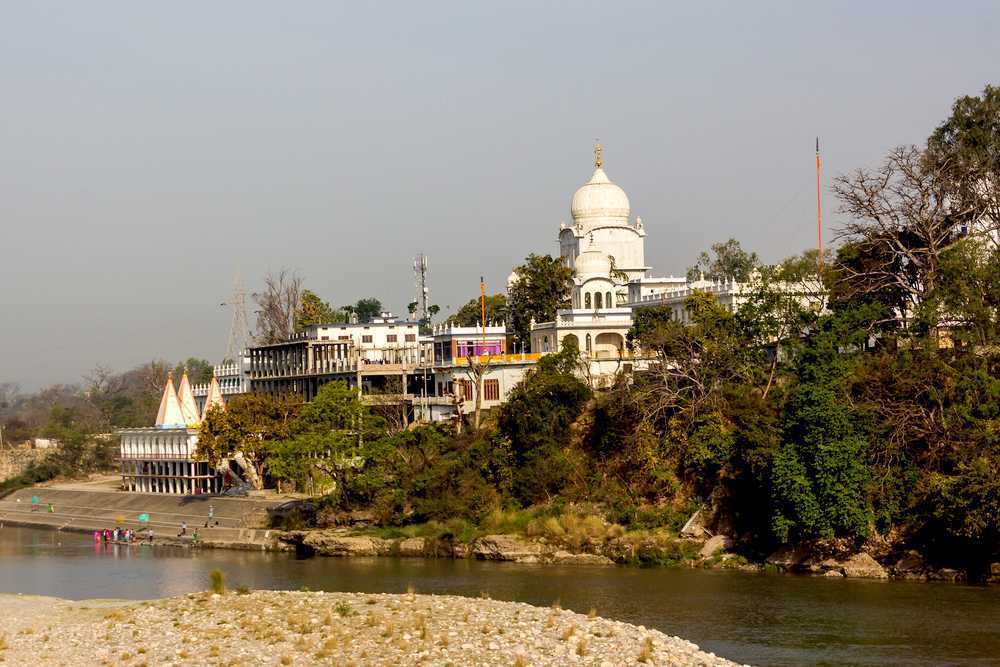
Guru Gobind Singh Ji, the tenth Sikh Guru, established Gurudwara Paonta Sahib in 1685 during his stay in Paonta Sahib. The name “Paonta” is derived from the Hindi word “Paon,” which means “foot,” and it is believed that Guru Gobind Singh Ji set foot in this region, giving it its name.
The time spent at Paonta by Guru Gobind Singh, was happiest period of his life. He enjoyed hunting in the thick forests around. The opportunites were enormous. The Guru wrote, “I enjoyed myself on the banks of Yamuna and saw amusements of different kinds.” The Guru took many steps to beautify Paonta and devoted most of his time in composing poetry. He was so much enamoured of poetry that he invited fifty two poets to his court. The pleasant environment and salubrious climate refreshed his mind. Most of the time he spent in reading and writing.
Gurudwara Bhangani Sahib
Gurdwara Bhangani Sahib holds historical significance as the site of the first battle fought by Guru Gobind Singh Sahib against the hill chiefs in 1688. Guru Gobind Singh Ji, the tenth Sikh Guru, spent a considerable time at Paonta Sahib, situated on the banks of the Yamuna River. The Guru faced hostility from the neighboring hill chiefs who opposed his presence and the growing influence of the Sikh community.
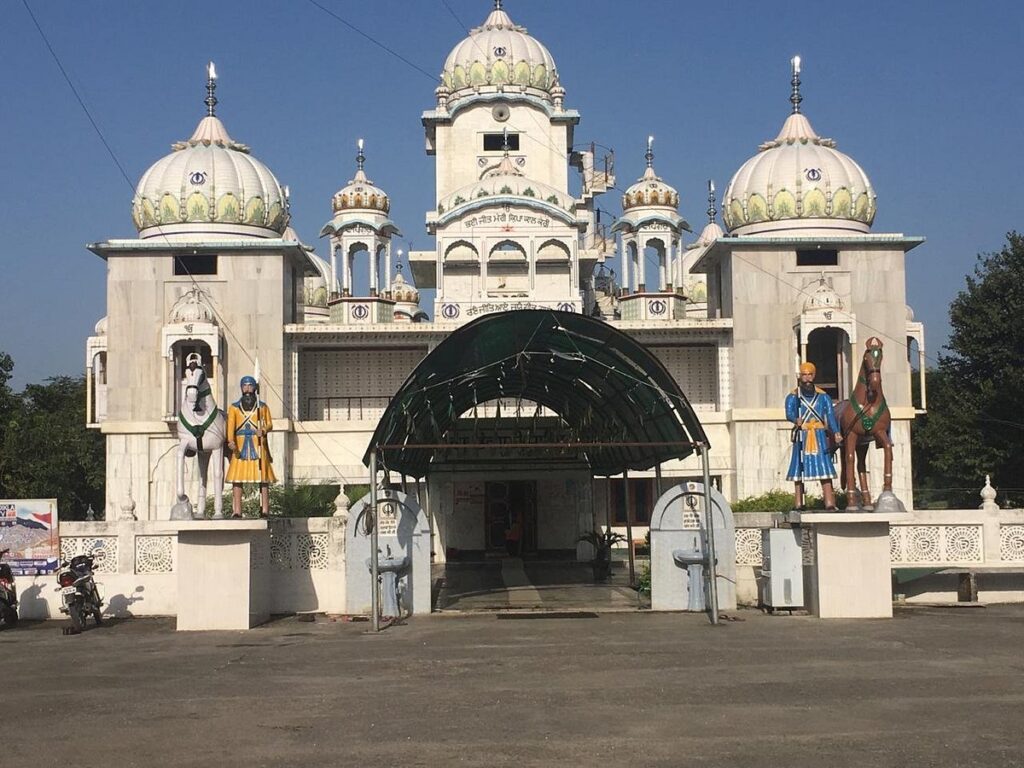
The Battle of Bhangani took place near Paonta Sahib, where Guru Gobind Singh Ji, along with his followers, confronted the combined forces of the hill Rajas. The battle was fierce, and despite being outnumbered, the Guru displayed exceptional courage and strategic acumen. Guru Gobind Singh Ji’s forces successfully defended against the attacks of the hill chiefs.The battle marked a significant victory for Guru Gobind Singh Ji and the Sikhs against the forces of tyranny and oppression. It demonstrated the martial prowess and resilience of the Sikh community under the leadership of Guru Gobind Singh Ji.
In commemoration of the Battle of Bhangani, Guru Gobind Singh Ji established a gurdwara at the battlefield. The gurdwara serves as a reminder of the historical event and pays homage to the sacrifices made by the Guru and his followers.
Gurdwara Sri Baru Sahib
Bhai Attar Singh (1866–1927), a revered Sikh and visionary, envisaged a centre of true education (a blend of scientific and moral education) in the lap of the Himalayas. One of his followers Bhai Teja Singh (1877–1965) took upon himself the task of fulfilling the vision of his mentor. To this end, he gathered a team of young students and inspired them to dedicate their lives to the service of humanity.
Bhai Iqbal Singh and Bhai Khem Singh were directed to search, locate and reveal to mankind a hidden holy site. The sacred site was located in the lower Himalayas somewhere near the town of Nahan (in Himachal Pradesh). Following the directive of Bhai Teja Singh, the young team of Bhai Iqbal Singh and Bhai Khem Singh searched a vast territory trying to locate the sacred spot; but in vain. Bhai Iqbal Singh then beseeched Bhai Teja Singh to allow him to resign his job in Punjab to take up employment in Himachal Pradesh. This step, he believed would facilitate the search for the sacred site. About 50–60 km from Solan, there was a village Baru spread over 400 Acres owned by one Thakur Joginder Singh. It was densely forested and had several springs. Under a huge walnut tree near a spring, sadhus would come and meditate from time to time. The Thakur would welcome them and offer them food.
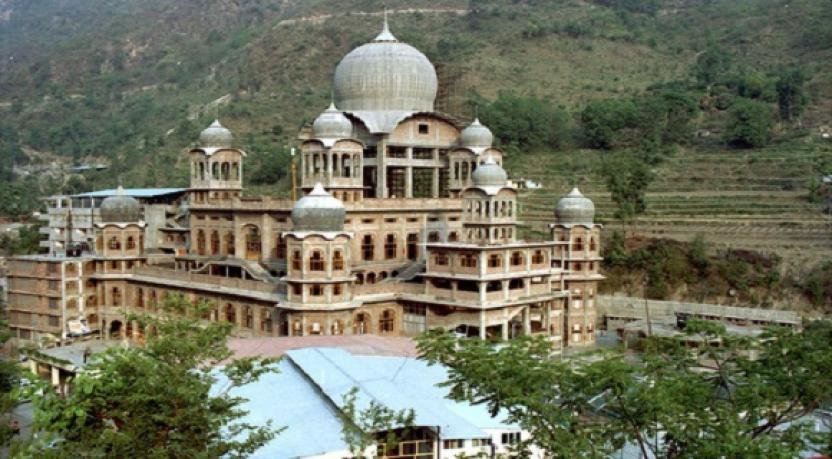
Baru Sahib is a place that started with a small mud-hut Gurdwara, and over time, it has grown into a significant center managed by The Kalgidhar Society. Bhai Teja Singh initially assigned Bhai Iqbal Singh to take care of Baru Sahib’s development. They expanded the mud-hut, built roads, and by 1975, added six rooms. Later, in 1981-82, they began constructing a proper Gurdwara building using cement and bricks.
In 1986, the famous Akal Academy began within the Gurdwara building with only five students. Since then, it has grown rapidly and now stands as an 11-story building with over 1500 students, including 200 from overseas, with 100 from the US alone. Out of these, 350 students receive free education. Some of them are from families affected by the 1984 tragedy, and others are children of Punjab’s martyrs. Apart from the Akal Academy, The Kalgidhar Society oversees various social initiatives at Baru Sahib. These include an orphanage, an old age home, a shelter for widows and destitute women, a 280-bed charitable hospital, a music center, and a spiritual academy for women where 200 young girls receive free training, including boarding and lodging.
The approach at Baru Sahib is inspired by the teachings of Sri Guru Gobind Singh Ji. It encourages everyone to follow the path set by Guru Gobind Singh Ji rather than imitating the lifestyle of sages and ‘rishis,’ which is more aligned with Brahmin Hindu traditions. The focus is on promoting Sikh values and principles in a simple and practical way.
Gurudwara Guru Ka Lahore
The Guru’s Lahore was built in Bassi village in district Bilaspur of Himachal Pradesh. This majestic Gurudwara Guru Ka Lahore is located 12 km from Anandpur Sahib in the state of Punjab. When Guru Gobind Singh was to be married, it was the wish of the bride’s father resident of Lahore Shri Harijs that Guru Gobind Singh should reach Lahore with his marriage procession. However, Guru ji had started some important work in Sri Anandpur Sahib and it was not possible for him to leave all this and go to Lahore. Lahore was instead created here for the sake of marriage. It was here that he was married to Mata Jeeto Ji.
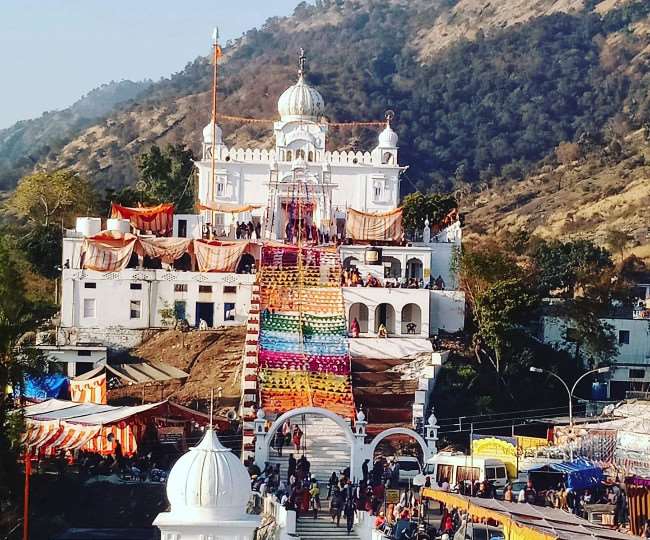
Gurudwara Takht Sri Kesgarh Sahib is one of the five Takhts (thrones) in Sikhism and holds a special place in Sikh history. The marriage ceremony of Guru Gobind Singh Ji is commemorated at this gurudwara. Pilgrims and devotees visit the site to pay their respects and seek blessings.
This is the reason that every year on the day of Basant Panchami, a Jod Mela is held in Guru’s Lahore to celebrate the marriage ceremony of Guru Sahib. This ritual is performed on the day of Basant Panchami and thousands of people from the Sikh community participate in the procession of Guru Gobind Singh which takes place from Anandpur Sahib to Guru Ka Lahore.
Gurudwara Nanak Jhira Sahib
Gurudwara Nanak Jhira Sahib is associated with Guru Nanak Dev Ji, the founder of Sikhism. According to the historical account, during Guru Nanak Dev Ji’s travels, he visited Bidar. At that time, Bidar faced a severe water scarcity issue, and the people were suffering due to the lack of water. Legend has it that Guru Nanak Dev Ji, in response to the water scarcity, performed a miracle. With a strike of his stick (referred to as “jhera” in Punjabi), Guru Nanak created a freshwater spring that began to flow continuously. This spring is considered a divine blessing, and the water from it is believed to have healing properties.
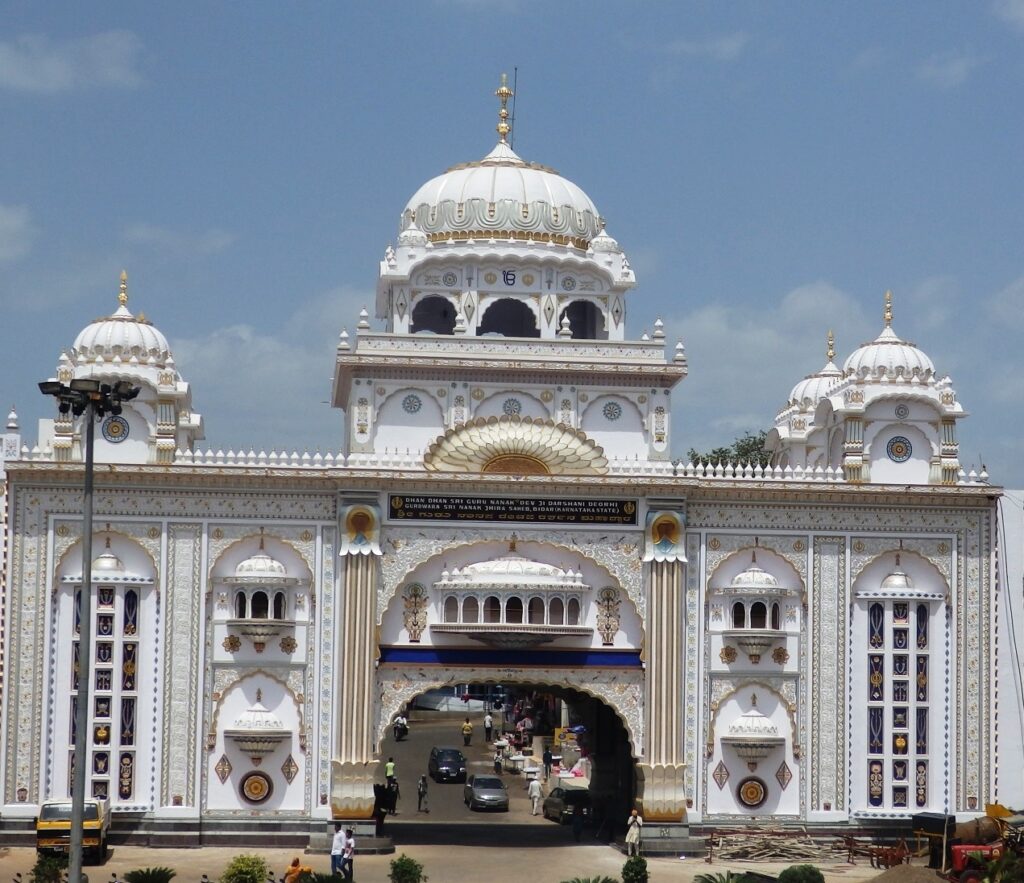
In 1948, recognizing the historical and religious significance of the site, the Sikh community decided to build a gurdwara to commemorate Guru Nanak Dev Ji’s visit and the miraculous creation of the spring. Thus, Gurudwara Nanak Jhira Sahib was established. Gurudwara Nanak Jhira Sahib holds great religious and cultural significance for Sikhs. The continuous flow of the freshwater spring is considered a blessing, and many pilgrims visit the gurdwara to partake in the holy water. The gurdwara complex includes the main prayer hall, a sarovar (pond), and other facilities for the convenience of the pilgrims.
The presence of Gurudwara Nanak Jhira Sahib in Bidar reflects the cultural harmony and diversity in India. It stands as a symbol of the country’s unity in diversity, where religious sites are respected and visited by people from different backgrounds.
Gurudwara Dasvin Patashahi
The gurudwara is situated on the banks of the River Beas and is revered for its connection to the Battle of Nadaun, which took place on March 20th, 1691. Guru Gobind Singh Ji, in support of Raja Bhim Chand of Kahlur and other hill chiefs, fought against the Mughal general Alif Khan. The Mughals, sent by the Governor of Jammu, Miari Khan, were tasked with collecting taxes for Aurangzeb’s court in 1687. These funds were intended for Aurangzeb’s military campaign against the Marathas in the Deccan region.eccan.
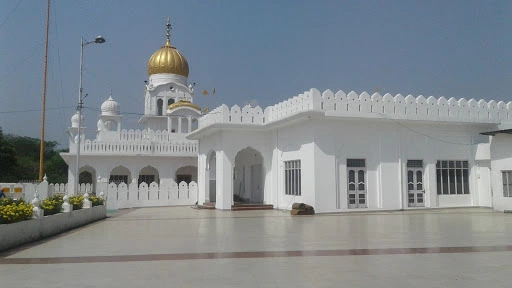
The famous battle was fought on March 20th, 1691. Alif Khan was defeated and forced to move back leaving his camp and its store of weapons with ammunition and other valuables behind. After the battle was over, Guru Gobind Singh stayed in a monument for 8 days in Nadaun. Later Maharaja Ranjit Singh built a Gurudwara on the spot where the Guru had pitched his tent. The gurudwara is also known as Gurudwara Nadaun Sahib. The present Gurdwara Dasvin Patshahi replaced the previous Gurdwara, built by Maharaja Ranjit Singh.
To commemorate the historical events associated with Guru Gobind Singh Ji’s stay and the battle, Maharaja Ranjit Singh, the founder of the Sikh Empire, constructed a gurudwara on the spot where Guru Gobind Singh Ji had pitched his tent. This gurudwara came to be known as Gurudwara Nadaun Sahib.
Gurudwara Shri Guru Teg Bahadur Sahib
Gurudwara Shri Guru Teg Bahadur Sahib in Una, Himachal Pradesh, is a Sikh religious site dedicated to Guru Teg Bahadur Sahib, who was the ninth Guru of Sikhism. The gurudwara holds historical and spiritual significance for Sikhs, and it serves as a place of worship and community activities.
The gurudwara is specifically dedicated to Guru Teg Bahadur Sahib, who was the ninth Sikh Guru and served as the spiritual leader of the Sikh community from 1665 to 1675. Guru Teg Bahadur is remembered for his martyrdom and selfless sacrifice for the protection of religious freedom and human rights. Gurudwara Shri Guru Teg Bahadur Sahib is a place where Sikhs gather to offer prayers, participate in religious ceremonies, and listen to the teachings of Guru Teg Bahadur Sahib. The gurudwara plays a crucial role in fostering spiritual growth and community bonding among the Sikh population in Una.
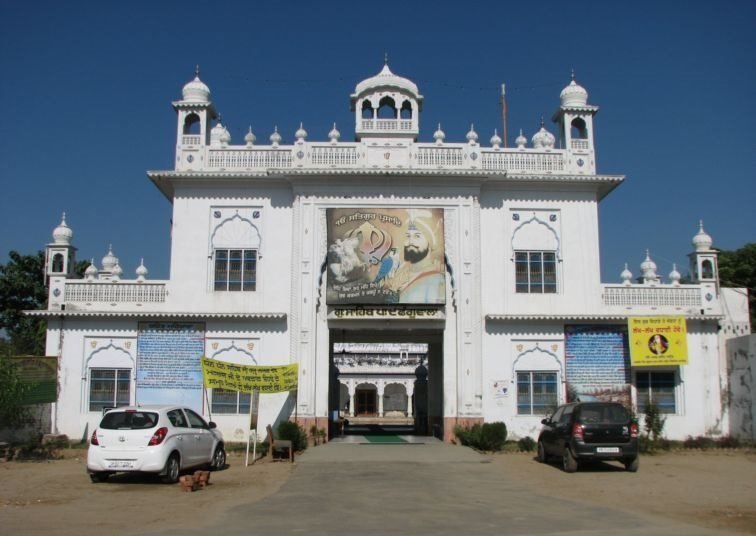
In addition to being a place of worship, gurudwaras often engage in various community services. This can include educational programs, healthcare services, and support for those in need. The community around Gurudwara Shri Guru Teg Bahadur Sahib may actively participate in these initiatives.
Gurudwara Bhrigu Patthar Sahib
Gurudwara Bhrigu Patthar Sahib, located in Manali, Himachal Pradesh, is a significant Sikh religious site associated with Guru Gobind Singh Ji, the tenth Guru of Sikhism. The gurudwara is believed to be linked to a historical event during Guru Ji’s travels.
Gurudwara Bhrigu Patthar Sahib is closely associated with Guru Gobind Singh Ji. It is believed that Guru Ji visited this place during one of his journeys through the Himalayan region. The gurudwara gains its historical significance from the connection to Guru Gobind Singh Ji’s travels. Guru Ji traveled extensively to spread the message of Sikhism, and many gurudwaras are associated with specific events or incidents that occurred during these travels. The gurudwara is named after Bhrigu Lake, a sacred lake situated at a higher altitude in the region. The term “Patthar” translates to “stone.” It is said that Guru Gobind Singh Ji rested on a large stone (patthar) at this location during his visit.
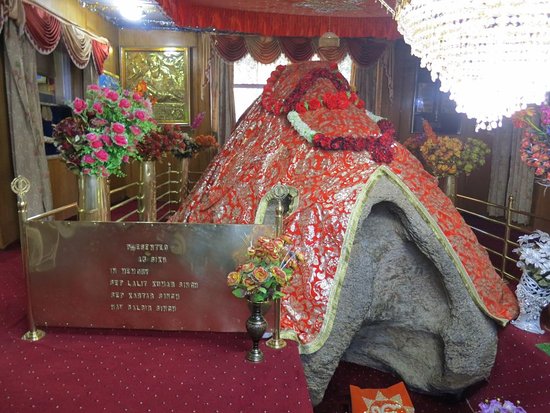
Gurudwara Bhrigu Patthar Sahib holds spiritual significance for Sikhs who visit the site to pay homage to Guru Gobind Singh Ji. The serene and scenic location adds to the spiritual atmosphere, providing a peaceful setting for prayer and reflection. Sikhs and devotees consider Gurudwara Bhrigu Patthar Sahib as a pilgrimage destination where they can connect with the spiritual legacy of Guru Gobind Singh Ji. Pilgrims often undertake journeys to such gurudwaras to seek blessings and inspiration.
Gurudwara Shri Guru Singh Sabha
Gurudwara Shri Guru Singh Sabha is specifically dedicated to Guru Nanak Dev Ji, the first Guru of Sikhism. Guru Nanak Dev Ji’s teachings form the foundation of Sikh philosophy, emphasizing oneness, equality, and devotion to God.
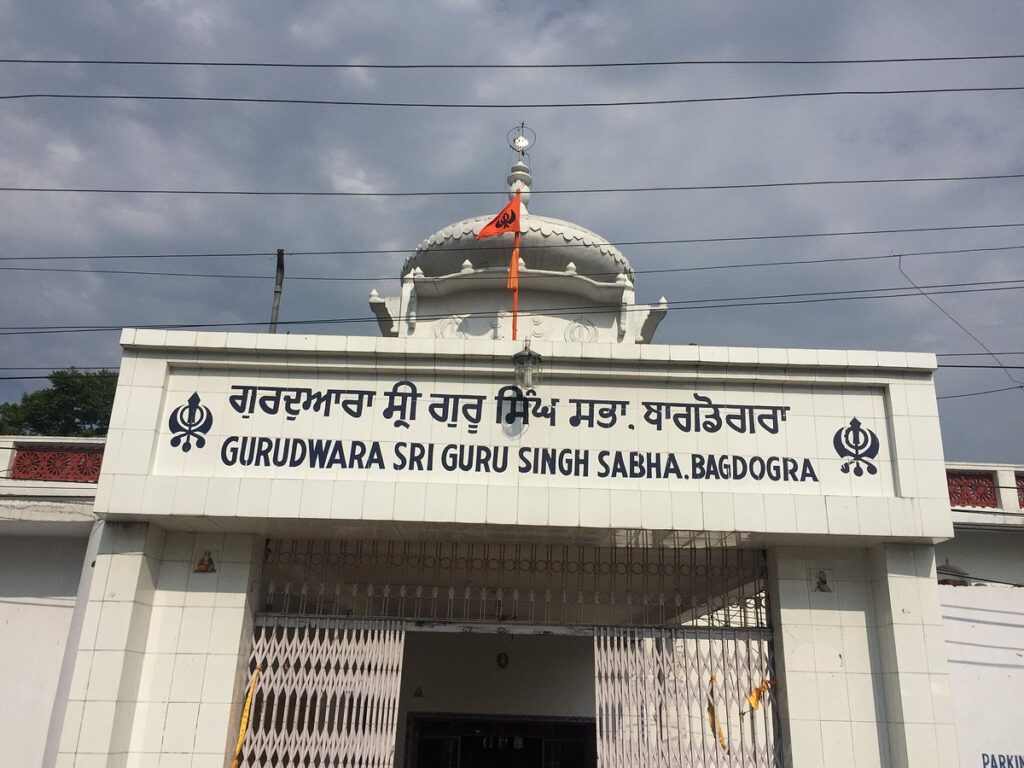
As a gurudwara, the primary function of Gurudwara Shri Guru Singh Sabha is to serve as a place of worship for the Sikh community. The central scripture, Guru Granth Sahib, is installed in the prayer hall where congregational prayers, kirtan , and religious discourses take place. They may have archival records or oral histories that provide insights into the establishment and development of the gurudwara.
